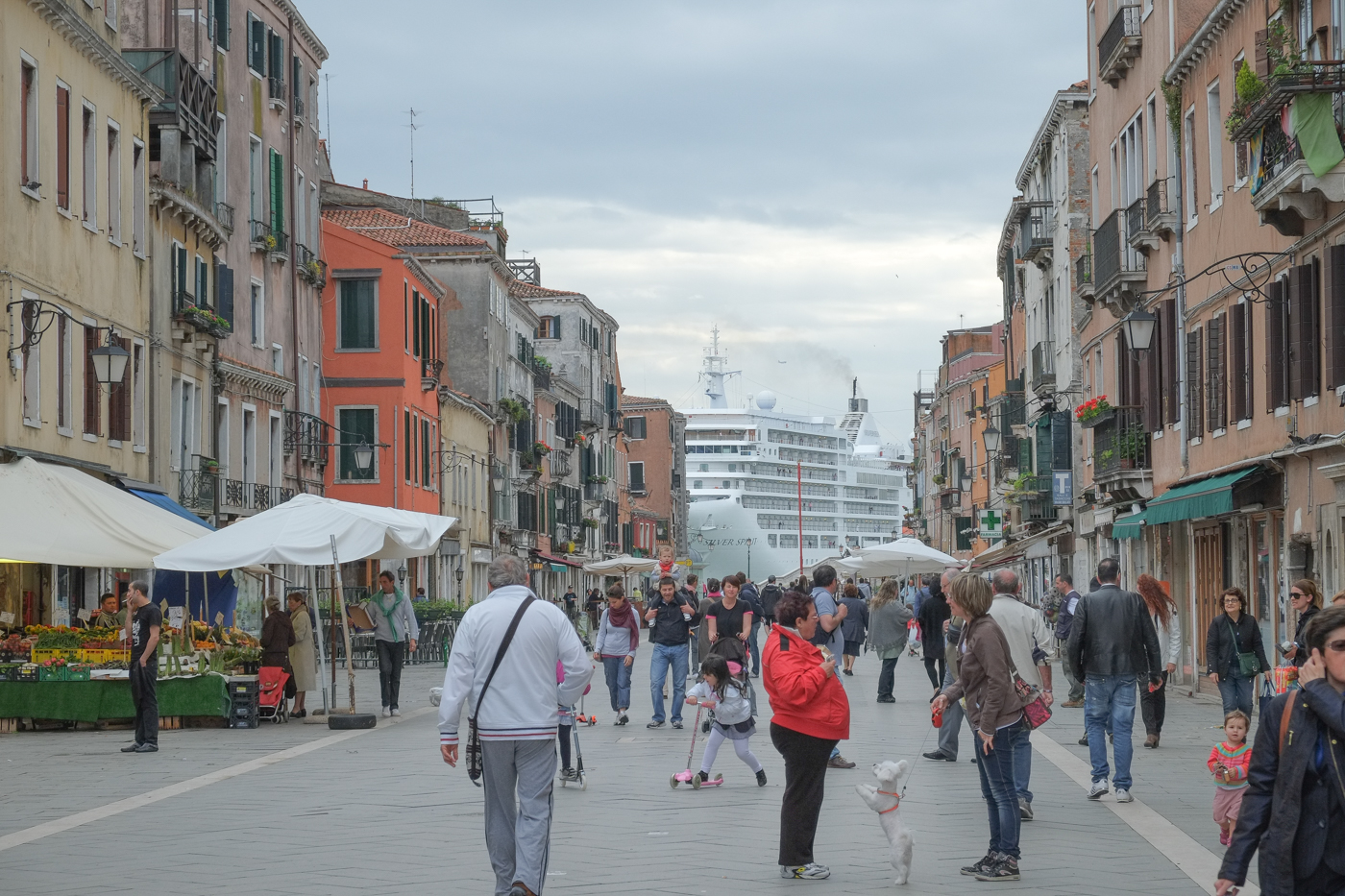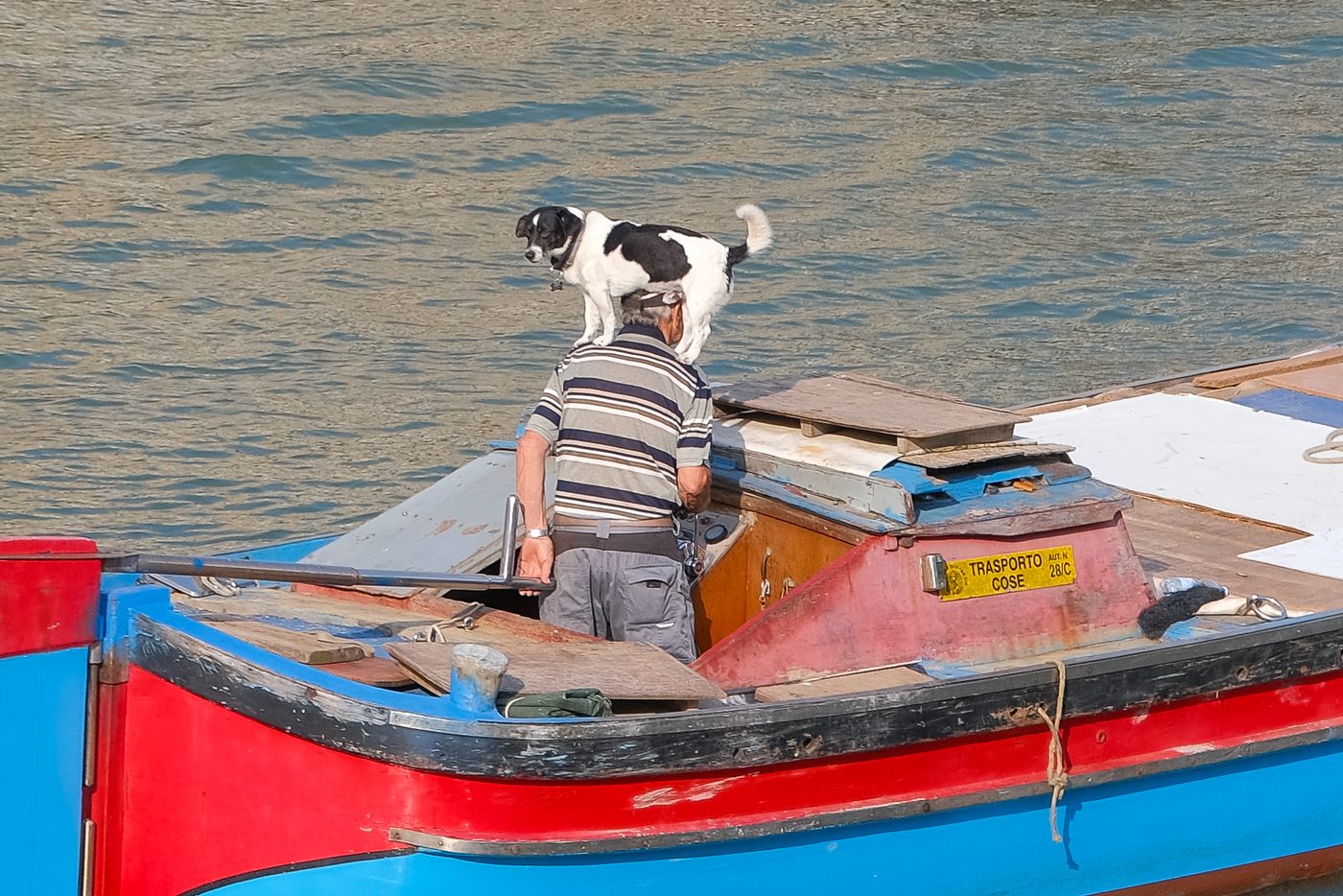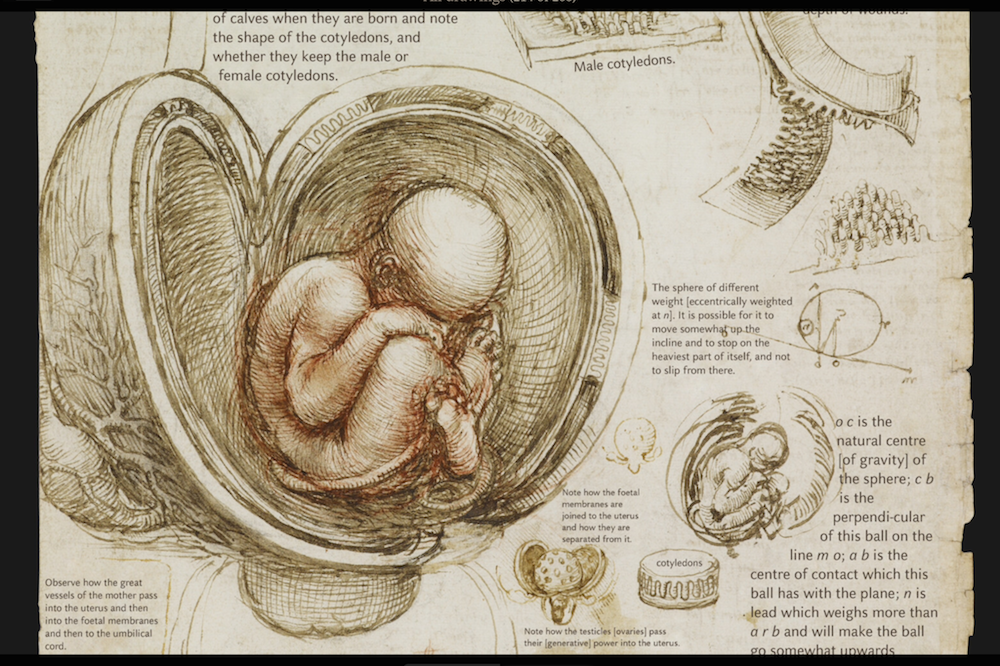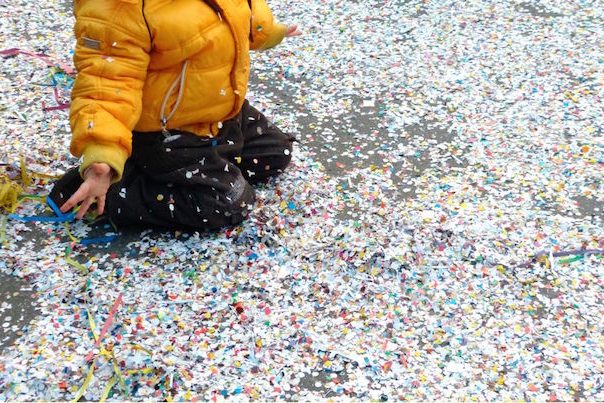It was the best of decisions. It was the worst of decisions.
It was, if you believe Italy’s Transport Minister Maurizio Lupi, a triumph for the city of Venice. It was he who announced on August 8 that beginning in 2015 monstrous cruise ships of over 96,000 tons would no longer be allowed to pass through the heart of the city and that an alternate route would be dredged at its south-western edge. Venice lovers everywhere, including the 60 high-profile celebrities who signed an open letter decrying big ships to Italy’s prime minister in late June, were encouraged to rejoice.
Many Venetians, however, did not. Many of them found it quite odd, if not downright suspicious, that this long-awaited meeting of the special inter-ministerial committee assigned to decide issues concerning Venice (the Comitatone) was announced only the afternoon before it took place, and that its decision was released on a sleepy Friday afternoon well into August, when it was sure to receive the least possible attention—and scrutiny by the press.
In fact, press coverage of this issue has been surprisingly superficial since the Italian government’s first attempt to impose new regulations on cruise ship traffic in November 2013 (which was subsequently overturned by a regional court). A perusal of most news reports might easily lead one to believe that all big ships would be forbidden to pass through the basin of San Marco (within 1,000 feet of the Doges’ Palace.) Even the video reports of a respected news outlet like the BBC have included misleading footage of large ships under 96,000 tons that would be unaffected by the proposed ban.
In truth, though the new regulations are supposed to decrease traffic by 20%, there has never been a ban on all big ships sailing through the basin of San Marco and down the Giudecca Canal—only the most absurdly humongous. What would appear in the context of Venice to be a very big ship indeed to most of us (do a web search, for example, on the 77,000 ton P&O Cruises Oceana) will still be perfectly free to ply that route through the historic center.
This question of how big is “big,” has always been one problem with the proposed regulations. But it’s not what Venetians are upset about right now, nor what motivated some of them to create an online petition calling upon Prime Minister Matteo Renzi to put a halt to the proposed dredging of the new canal. The petition garnered over 10,000 signatures in just the first 11 hours after it was posted last week, and that number has now surpassed 24,000. “You can read (and sign) the petition here: www.change.org/p/stop-the-plan-to-dredge-the-maxi-canal-contorta-in-venice-before-it-s-too-late.”
Last week I spoke with one of the petition’s creators, Jane Da Mosto, environmental scientist and author (with Caroline Fletcher) of The Science of Saving Venice and contributor to The Venice Report, two of the most informative and well-researched books published on contemporary Venice and the challenges it faces. “One of the things that is so disturbing about the government’s decision” she told me, “is that it will potentially have the most profound effects on the well-being of Venice, yet it was made in Rome not only without the input of any Venetian representative, but without considering up-to-date scientific, technical and economic assessments.”
She reminded me that Venice has been without a mayor since June, when Giorgio Orsoni was arrested on corruption charges, and told me that the bureaucrat appointed by Rome’s Minister of Internal Affairs to oversee city operations until a new mayor can be elected abstained from voting on the cruise ship proposal. She seemed to have little doubt that the opinions of Venice’s Port Authority, which claims to have poured 200 million euros in recent years into the expansion of cruise ship terminals at the city’s western end, and is strongly in favor of dredging a new deep channel to them, were well represented at the Comitatone meetings.
But politics aside, her concern is that dredging a wide deep canal out of what at present is a typically small meandering lagoon channel (the Canale Contorta) may very well cause more damage to the well-being of the lagoon and the structural integrity of the city than the gargantuan ships now passing through the basin of San Marco. “UNESCO designates Venice and its lagoon as a World Heritage Site, not simply Venice,” she said “and in doing this it recognizes that the health of the city has always been inseparable from the health of the lagoon.”
“Venetians have been altering the lagoon for centuries,” she continued. “The whole thing would have silted up and become terra ferma if they hadn’t begun a massive project of diverting rivers in the 14th century. But it’s now been well-documented that the dredging of deep water channels that began in the early 20th century has changed the lagoon in damaging ways.”
“The extensive mud flats and salt marshes that once characterized the lagoon have been literally washed out to sea by the strong currents carried by such deep shipping channels as the Canale dei Petroli. The mud flats and marshes cover just 1/3 of the area they did at the end of the 19th century. And this isn’t just bad news for wildlife, it’s very bad news for all the buildings that people come to Venice to see, as those mud flats used to moderate wave energy sweeping in from the Adriatic. The irregular shallows of the lagoon used to dampen the intensity of acqua alta. But the lagoon, especially its southern half, where the new channel would be dredged, has become a deep clean-scrubbed salt-water bay. Tides coming into and going out of the lagoon have become more damaging.”
“This is a fact on which there is no disagreement, even here where everyone loves to disagree. Venice has spent a great deal of money in recent years to create new mudflats. You can see the heavy machinery at work right now on a massive project near Certosa. So why in the world would you dredge a canal on one side of the city that is likely to create the disastrous effects you are working to counteract on the other?”
She told me that an environmental impact assessment of the proposed new canal must be completed within 90 days of the August 8 announcement of the proposal. I asked whether this means the plan will be scrapped if the assessment finds the dredging is likely to be harmful. She looked dubious and replied, “In theory, yes. But there are plenty of big projects that have gone forward in spite of negative environmental impact assessments. MOSE (the massive multi-billion euro flood gates at the mouths of the lagoon) received a negative assessment. But they went ahead with it anyway.”
Moreover, the Cruise Line International Association, while praising Rome’s decision in the greenest of terms in the August 13 edition of Britain’s Daily Telegraph Travel Section (going so far as to use the phrase “sustainable solution” twice in a single sentence), emphasized that “the new project must be developed in a timely manner” lest Venice be left off the 2015 itineraries of its largest ships. The clock, in other words, is ticking.
I asked Da Mosto what decision she would reach about the big ships if she had sole authority to make it. “I don’t know what final decision I’d reach,” she answered, “but I do know that a valid one on such an important long-ranging matter can only be reached after a proper study of the various options available.
This means a thorough and well-founded examination of the costs and benefits of each option, based upon research performed by disinterested experts, rather than outdated studies often commissioned by those with a vested interest, such as the Port Authority itself. The decision must involve due process, and the process itself must be transparent and available to public consideration. As it is, though the environmental impact assessment cannot be undertaken before a concrete proposal is submitted, and though the Director of the Port Authority, Paolo Costa, has stated that such a proposal for the dredging was finalized on August 11, absolutely no one anywhere has been able to obtain a copy of it!”
“In a city reeling from the widespread corruption of the MOSE project—our mayor having been arrested, more than 30 others facing charges, 100 more under investigation—even the appearance of secrecy is the last thing we need.”
“I would like to really know what comes in and what goes out with the cruise ships. Their real economic impact on the city. How much money is made by the cruise lines and their shareholders, how much actually comes into the city, and who in Venice gets that money. How many jobs truly depend upon the current arrangement, and how many jobs would be created by alternatives, such as building a new cruise ship terminal at Punta Sabbioni on Lido. Or in Marghera.”
“There are a lot of interested parties that say that the passenger terminal, for example, must remain exactly where it is. But it’s not a matter of making Venice compatible with the cruise industry, it’s a matter of making the cruise industry compatible with Venice. Otherwise we run the risk of losing the very city that all those passengers come to see.”
For more about living in Venice, visit Steven Varni’s blog: veneziablog.blogspot.com





























